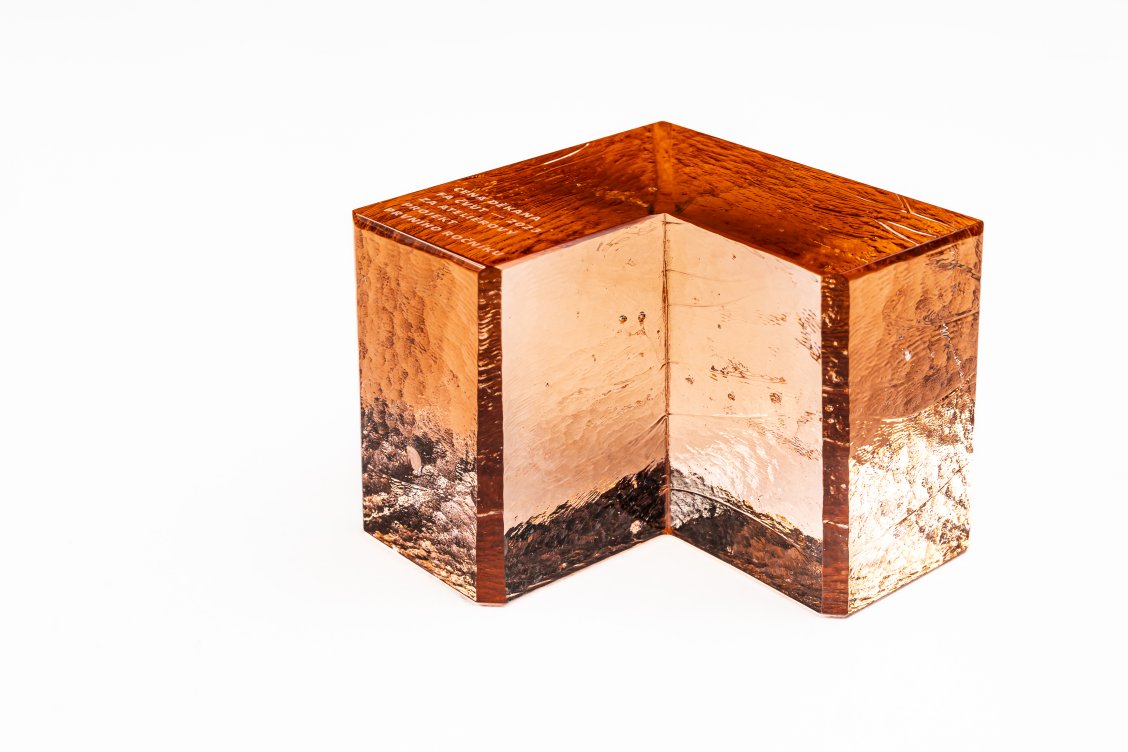Dean's Awards 2023 handed out
27/11/2023
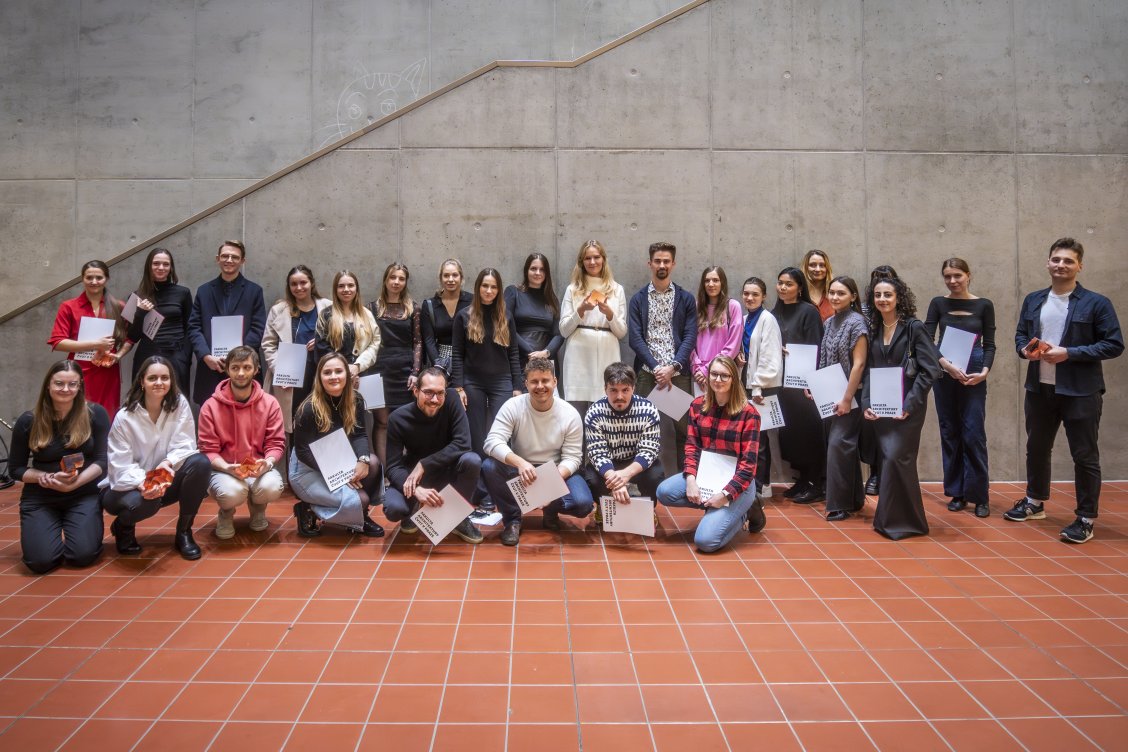
Cena děkana je každoročně udílena mimořádným semestrálním a diplomovým pracím. Je zároveň reflexí kvality a směřování výuky na fakultě. V letošním ročníku bylo celkem nominováno 18 projektů prvních ročníků, 45 ateliérových projektů a 19 diplomových prací. O vítězných pracích rozhodovala sedmičlenná porota ve složení: Dalibor Hlaváček, Peter Jurkovič, Michal Marcinov, Jiří Opočenský, Petr Stanický, Lucie Vogelová a Tomáš Zdvihal.
The authors of the winning projects received glass statuettes designed by FA design graduate Klára Janypková. In addition, the Dean's Awards for the studio projects were rewarded with a cheque for CZK 20,000, for the diploma project with CZK 30,000 and for the outstanding achievement with CZK 10,000.
"The third year of the competition once again showed the diversity of our faculty and the scope of topics that our students are working on. We recognized the outstanding student work and the passion our students and faculty have for architecture and urban planning, landscape architecture and design. Congratulations once again to all the winners and nominees, they were selected from nearly 2400 works that are produced at our faculty every year", says Dalibor Hlaváček, Dean of the FA CTU.
In the category of studio work of the first year, Alžběta Pisoňová from the Bébarová studio won with her design of a chess set for the blind. The jury appreciated the strong theme, execution and aesthetic appeal of the design.
The first place in the Architecture category went to Nelávka by Petra Biliková, Tereza Smažinková and Matěj Střecha. The design was created in the Mádr studio as part of the cooperation between the Department of Architectural Design II and the KRNAP Administration. According to the jury, the footbridge artfully uses raw materials and discovers hidden beauty in them.
Nikol Stojanová and Radek Vladař from the Plicka–Škrna studio won the Urbanism category for their work analysing the possibilities of integrating the Nisa River back into the structure of Jablonec nad Nisou. The jury highlighted the complex treatment of different levels of intervention.
The best studio landscape project was developed by Kristýna Tesková from Sitta studio. The project deals with the seafront in Reggio di Calabria in southern Italy and according to the jury it is a visionary study that provides stimulus for reflection and discussion about the use of the landscape.
The coffin for pets made from MYKOFIN mycelium by Vojtěch Vydržel is the best work in the design category, the project was created in the Fišer studio. "A clearly described process from analysis through the various stages of design to the final product. Everything fits together," said the jury.
The best diploma project of last year at the FA CTU is the Conception of Landscape Solution of Revitalization of the Lusatian Neisse Upper Catchment Area by Ruby Pavoučková from the Salzmann Studio. It won thanks to its professionally managed analytical and design part, exceptional scope and quality preparation.
The Dean's Award for Outstanding Achievement in the category of Sustainability and Experimental Project was awarded to a team of 39 authors who developed a design for Biotopia – a city of the future, where people can live in symbiosis with nature.
Photos from the ceremony can be found in the gallery Life of FA.
Studio project of the 1st year
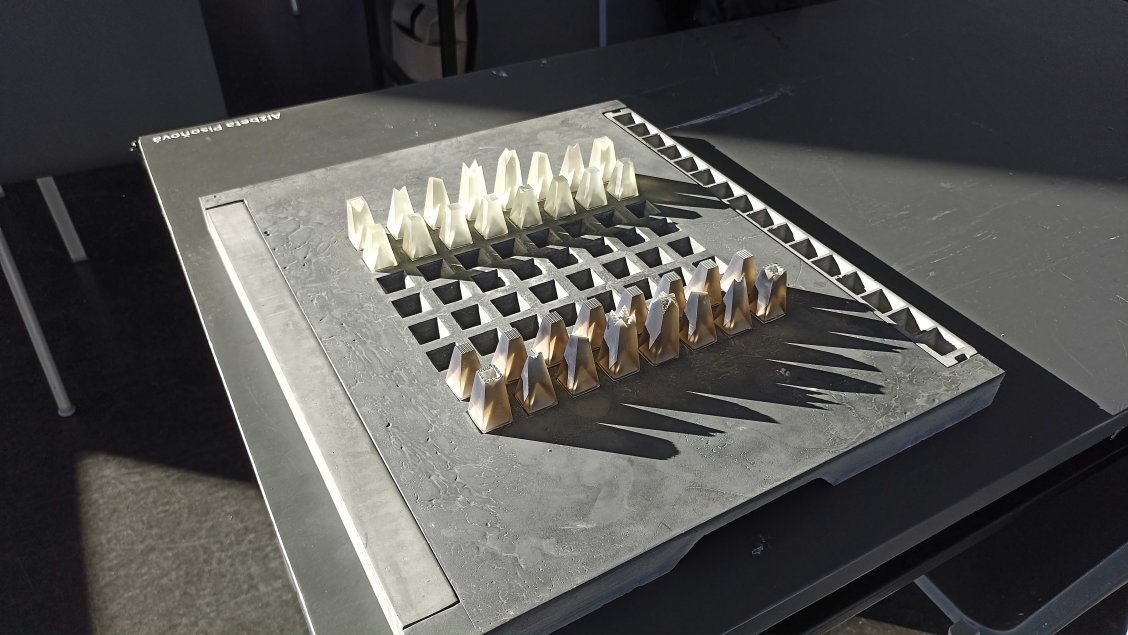
Alžběta Pisoňová – Chess Set – ZD Bébarová
Author's note: The idea to design chess for the blind was initiated by my (not) recent visit of the museum for the blind, where I had the chance to play with various games, among which was chess. Already at the beginning, I noticed several things that bothered me during the game or even made it unpleasant for me. I consulted the design with special pedagogy students, who deal with this topic during their studies, but unfortunately I did not have the opportunity to consult it with a blind person. This topic is very difficult to handle and require further research. I would like to present my design idea to you.
Jury evaluation: The jury agreed that the chess set for the blind is an innovative idea not only for the handicapped. The author of the project tackles a strong topic in a complex and unexpected way, showing that it is possible to design chess accessible to all. She has bravely mastered the problem of placing, storing and recognizability of chess pieces and created a user-friendly and aesthetically appealing object. Such chess would be a joy to play with!
Studio project of 2nd – 5th year – Architecture
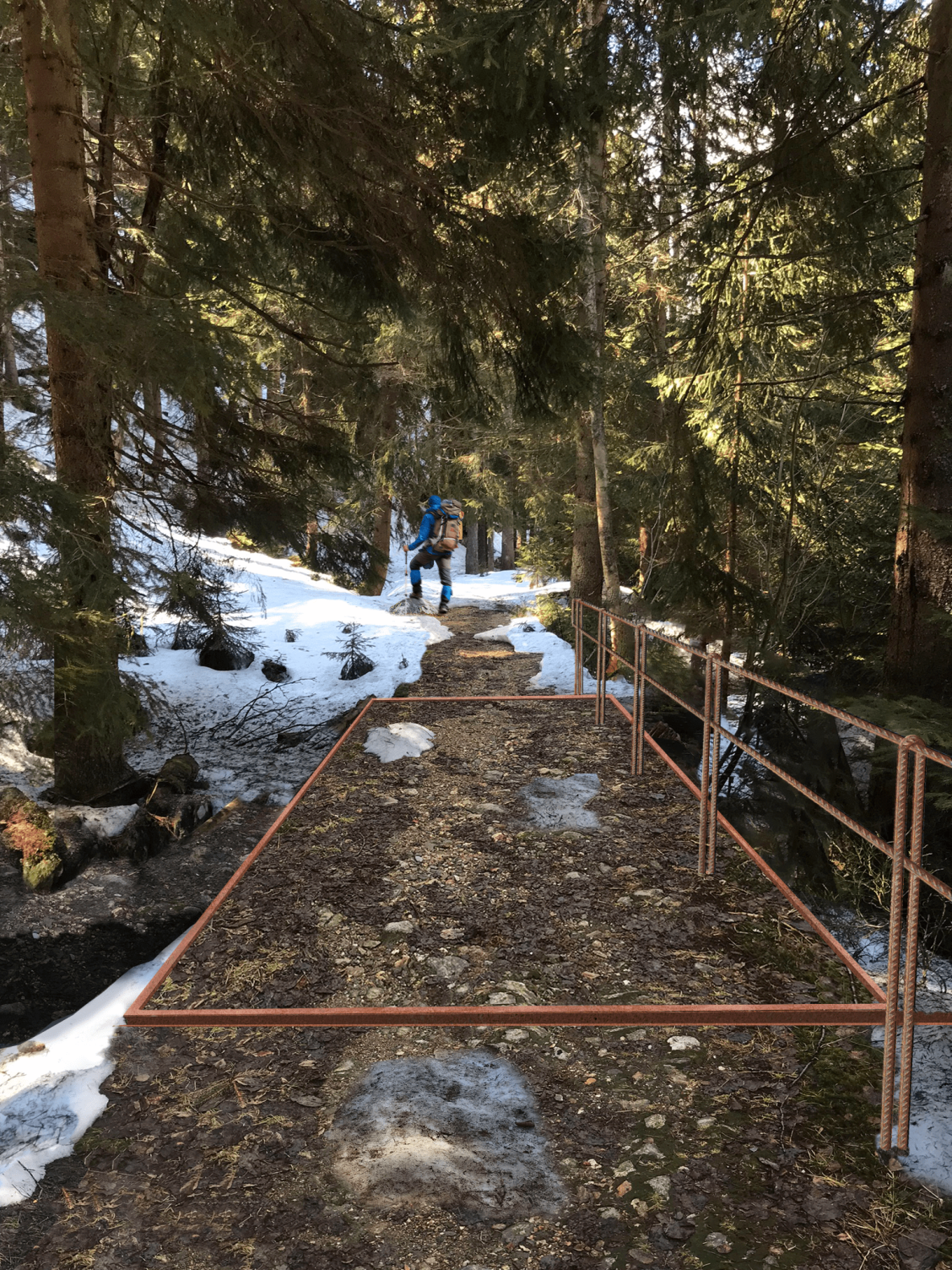
Petra Biliková, Tereza Smažinková, Matěj Střecha – Invisible Bridge – Studio Mádr
Author's note: The task of this project was to design a footbridge over small river called Friesova strouha, which is located in Krkonoše mountains. Because the site is located on a hiking trail in the middle of woods, we decided to create something modest, maybe almost invisible. That’s how we came up with the idea that the top layer of the bridge should be the same as the hiking trail. The construction is created by 3 larsen sheet pilings laid flat side by side. Fourth Larsen sheet piling is cut to create the sides. This tub is filled with gravel and dirt. The railing is made out of bent steel rods.
Jury evaluation: The project of the footbridge to the Krkonoše Mountains, which was worked on by 5 studios of the Department of Architectural Design II, deserves an award as a whole, and it is great that the students had the opportunity to finalize some of the designs that gradually cultivate the most valuable places in our country, where one would not expect any architecture in the first place. The name of the footbridge, Nelávka, speaks for itself. The footbridge artfully uses raw materials – sheet piling and concrete reinforcement – and discovers the hidden beauty in them. The authors have neglected the architectural expression of the structure, the aim being to create an unobtrusive object that blends in with the surrounding nature.
Studio project of 2nd – 5th year – Urbanism
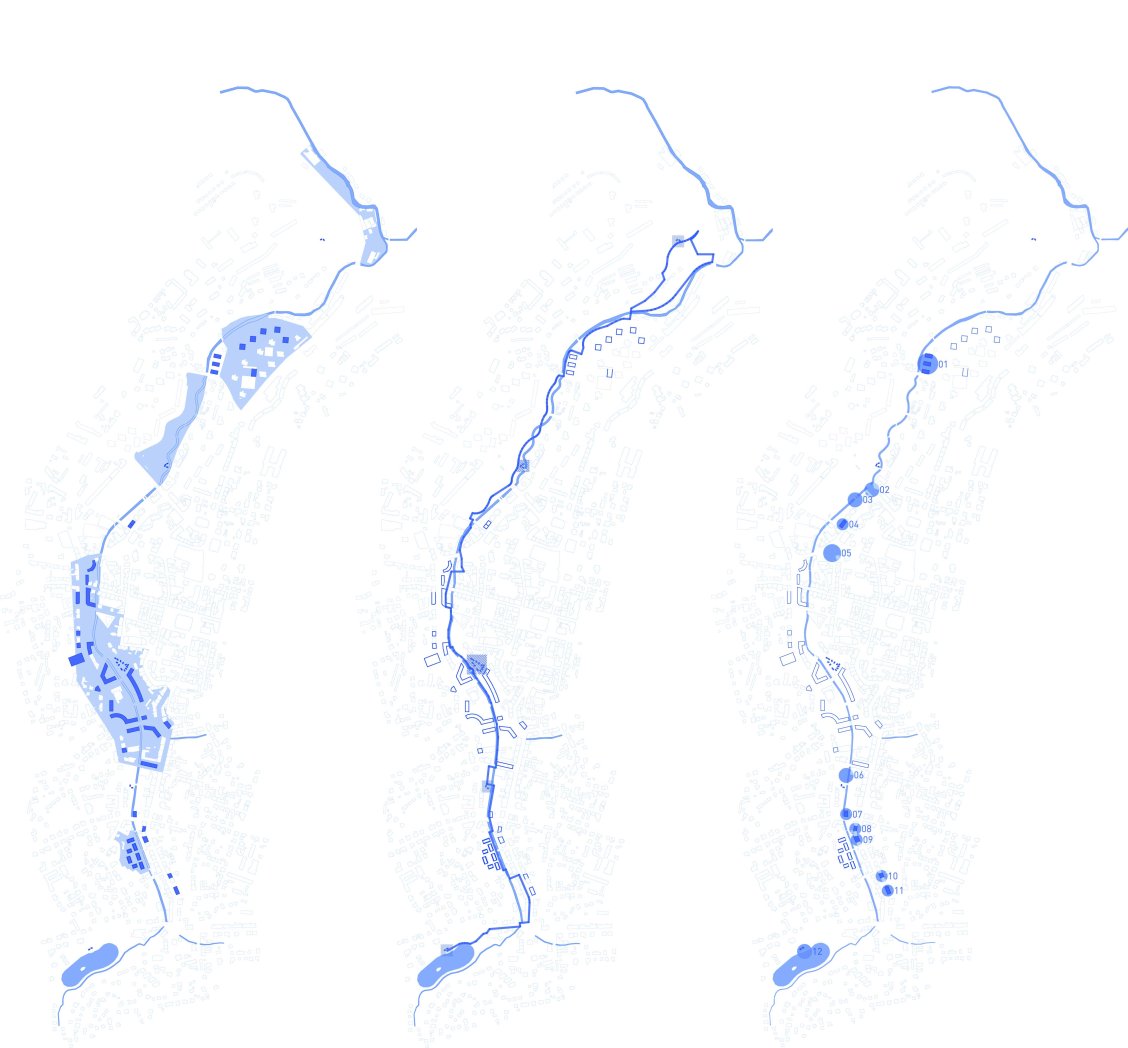
Nikol Stojanová, Radek Vladař – Jablonec Along Nisa – Studio Plicka–Škrna
Author's note: Jablonec nad Nisou, a city that carries the name of the river in its very title, which has morphologically influenced its urban structure, is an integral part of the city. The name itself seems to reveal a fundamental piece of information about the relationship between the city and the river - it is simply above it. The river flows beneath the city in a hardened stone bed, while the city turns its figurative back to it, treating it as a mere barrier. This approach has influenced the entire area surrounding the riverbed. The river simply passes through this city. It doesn't pause for a moment. It doesn't establish contact with people and animals, nor does it provide a pleasant atmosphere and microclimate. Therefore, the main thesis is: "The river is potential, not just a barrier."
Jury evaluation: The work dealt with the flow of the Nisa River, which it seeks to integrate into the fabric of the city. The work is developed in a comprehensive way, addressing different levels of interventions – lines, areas and points – from road networks, through areas adjacent to the river to acupuncture urban interventions.
Studio project of 2nd – 5th year – Landscape Architecture
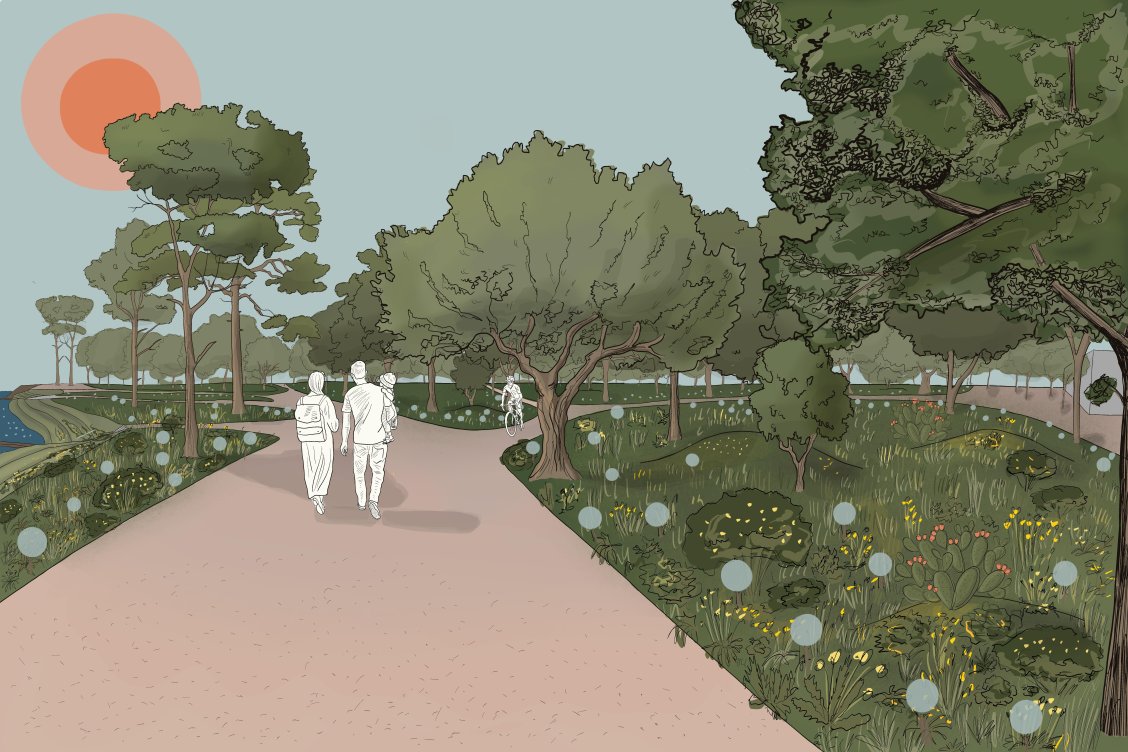
Kristýna Tesková – Fata Morgana / Museum of Lost Species – Studio Sitta
Author's note: The studio assignment deals with a seafront in Reggio di Calabria, in the very south of Italy. The project is a visionary study addressing the development of a densely urbanized area. It works with the idea of a museum of lost species - a memorial to the mute victims of human development. And how else to honour them other than by ensuring that other species do not become extinct, at least in Reggio? The project connects the sea with the mountains, works with migration and biodiversity, and introduces nature-friendly revitalization processes. It creates a dignified environment for them. It works with energy sustainability as well as new innovative processes of naturalization of urbanized areas.
Jury evaluation: The project deals with the waterfront in Reggio di Calabria, in the very south of Italy. It is a visionary study dealing with the development of a densely urbanised area. It exploits the potential of contact with water, integrating contemporary and often contradictory themes into the design, such as water management, working with local flora and fauna, accessibility, connectivity or energy generation. It provides thought-provoking ideas and discussion on the use of the landscape.
Studio project of 2nd – 5th year – Design
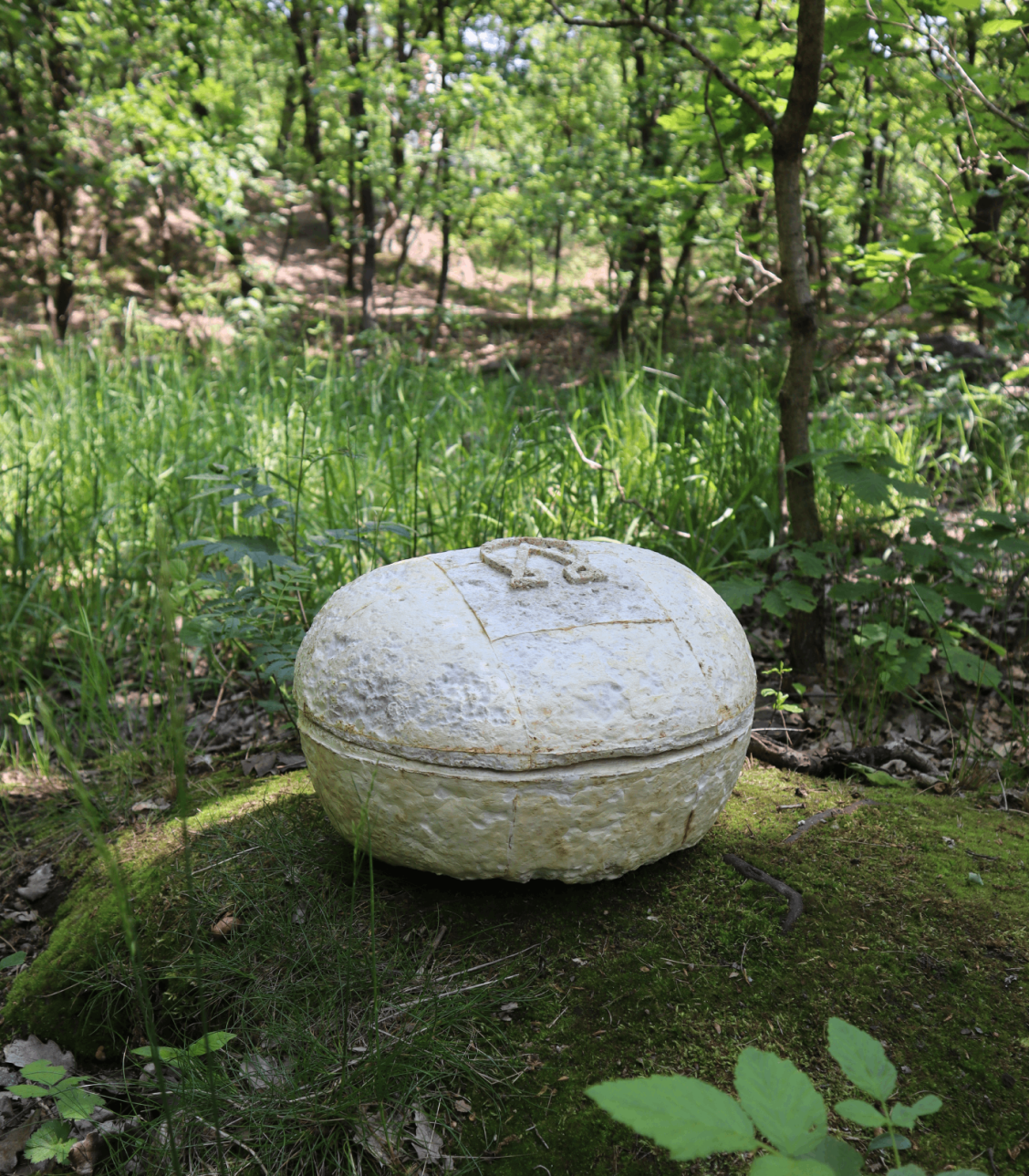
Vojtěch Vydržel – MYKOFIN / Coffin for pets – Studio Fišer
Author's note: In the summer semester 2023 we are working on the REBORN DESIGN competition assignment in the studio. One of the competition categories is the challenge of working with biocomposite mycelium. MYKOFIN is a collection of coffins and urns for pets. The shape of the coffin is ergonomically adapted to the sleeping position of the most common pets and the material used allows up to ten times faster decomposition.
Jury evaluation: An experimentally tested design that aims for a sustainable distribution of the coffin in the soil. A great combination of material and function. Clearly described process from analysis through the different design phases to the final product. Everything fits together.
Dean's Award for Diploma Project
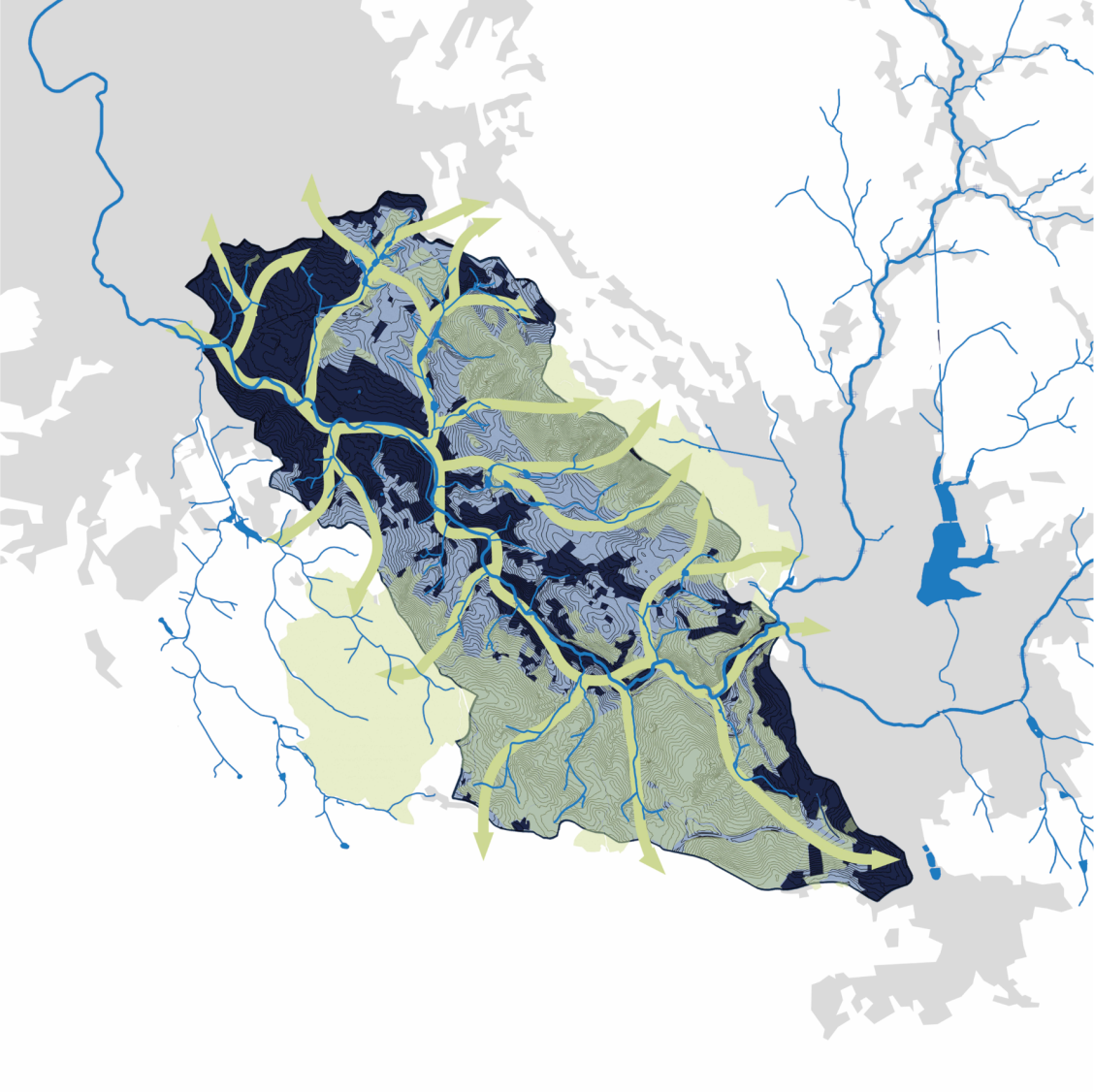
Ruby Pavoučková – Conception of Landscape Solution of Revitalization of the Lusatian Neisse Upper Catchment Area – Studio Salzmann
Author's note: The diploma project deals with the concept of revitalization of the area of the selected part of the upper catchement area of Lusatian Neisse. The selected area lies between the densely built-up centre of Liberec and Jablonec and has high flood risk. From the general analysis of the natural conditions of the entire upper catchement area and the analysis of changes of the cultural landscape of the Lusatian Neisse valley, the work comes to mapping the current state of the watercourses and the subsequent cultural landscape. On the basis of this analysis, the concept of landscape solution for revitalization is further created. The concept is structured from the overarching vision, goals and principles of the future catchement area development, through strategies and tools for the revitalization of watercourses, the water environment and the revitalization of the retention capabilities of the suburban agricultural landscape to examples of conceptual revitalizations of selected parts of river and stream landscapes and adjacent agricultural landscapes.
Jury evaluation: Professionally managed analytical and design part, from which you can feel the strong interest of the student in the chosen topic of landscape regeneration. The work could also serve as a general manual for the treatment of headwater streams in the Czech landscape. It is an exceptionally extensive and well developed project.
Dean's Award for Outstanding Achievement in the category of Sustainability and Experimental Project
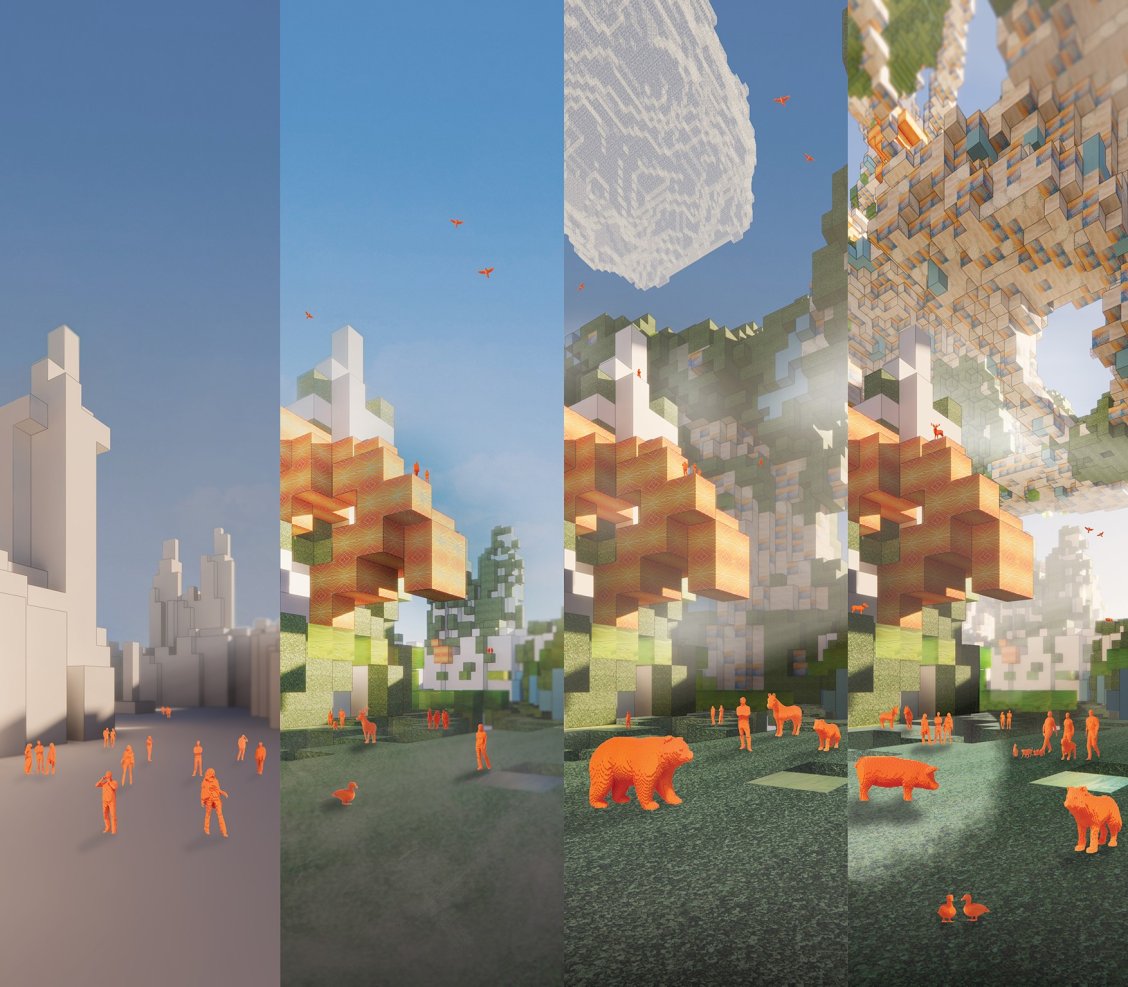
Team of 39 authors – Biotopia – Studio Maas
Author's note: For centuries, design focused on objects with single meanings: everything was architecture. More recently, we zoomed out to look for new meanings, at every scale, from the very small to the very large: everything was urbanism. Recently, design finally started to -timidly- understand the meaning of ‘green’: everything was landscape. Today -more than ever- everything is biology. Everything is Nature.
Jury evaluation: We were intrigued by the complexity of the work that was created in the studio-wide team. The project is very presentable, thanks to the multimedia presentation. The form of the message becomes a visual experience. The theme sounds the alarm that the current human exploitation of the planet is unsustainable. We like the exploration of experimental forms and goals.
